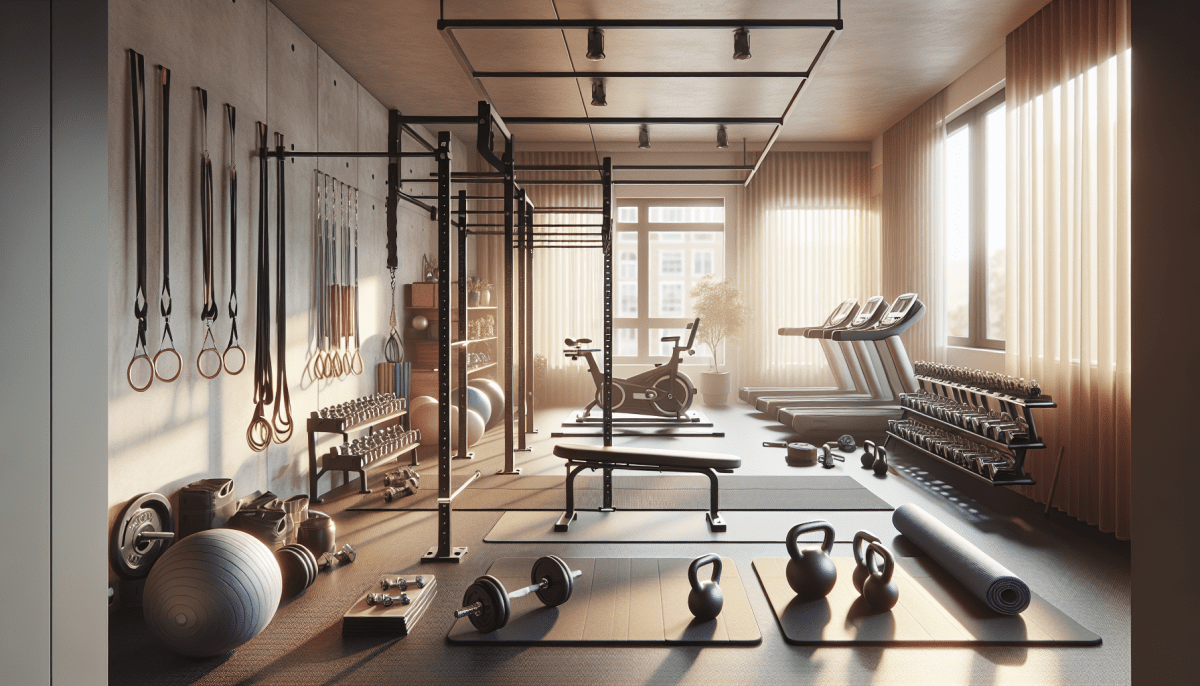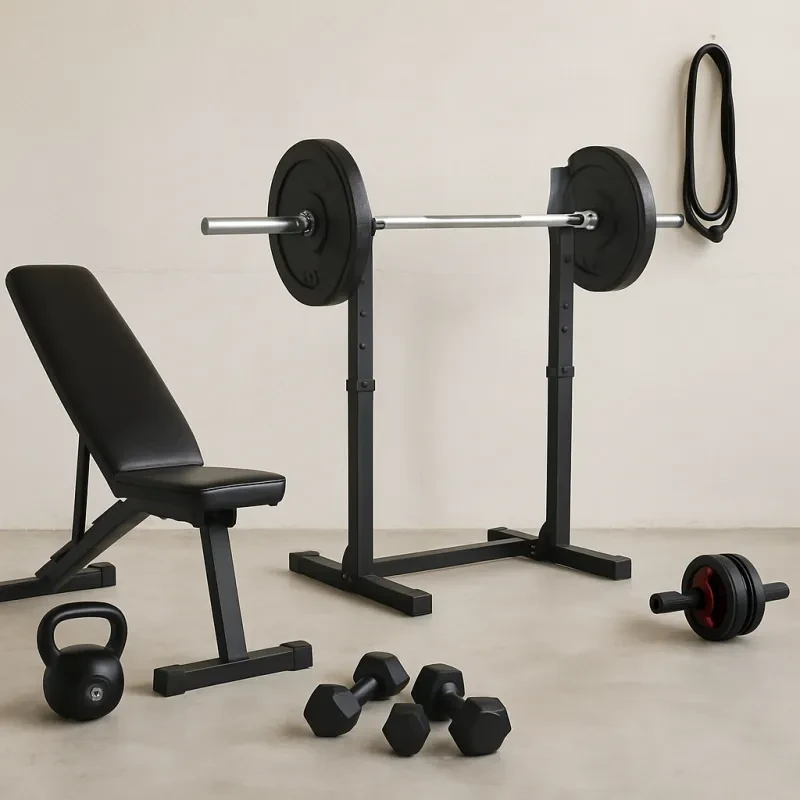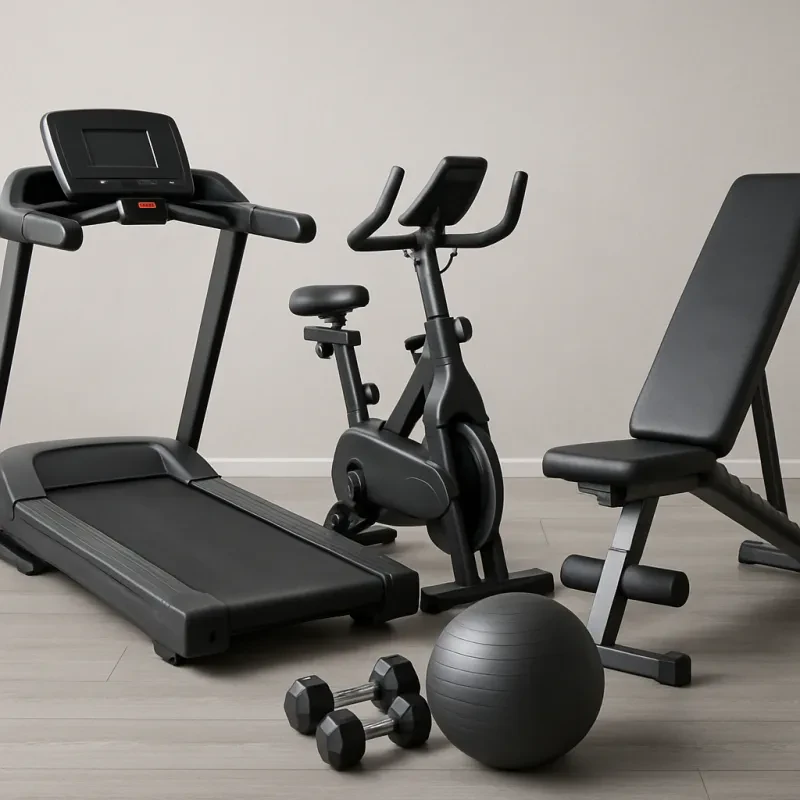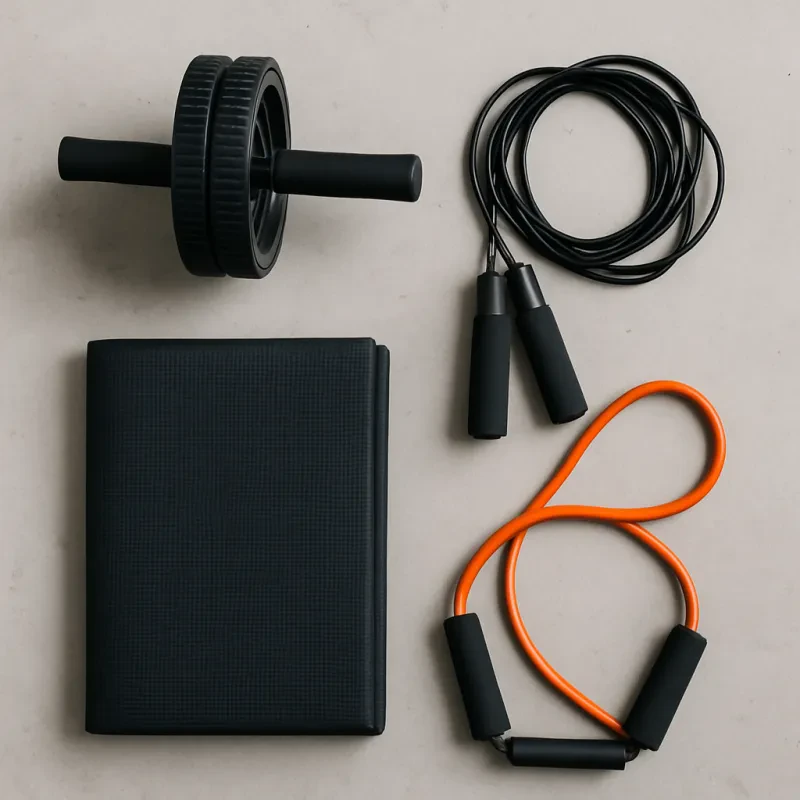Transforming a corner of your home into a personal fitness haven is easier than you might think. Whether you're a seasoned athlete or just starting your fitness journey, having the right setup can make all the difference. With essential home gym equipment, you can create a space that’s tailored to your goals, convenient for your schedule, and free from the distractions of a crowded gym. From versatile machines to compact tools, building your perfect workout space doesn’t have to break the bank or take up too much room. Let’s explore how to design a functional and motivating environment for every type of exercise enthusiast.
Choose the Right Space for Your Home Gym
Start by identifying a spot in your home that can accommodate your fitness needs. Look for an area with sufficient room to move freely while using your essential home gym equipment. Avoid cramped spaces where you might feel restricted during exercises like stretching, strength training, or cardio routines. Focus on finding a location that allows you to perform various movements without obstacles.
Consider ventilation when selecting the space. Proper airflow is important to keep the area fresh and comfortable during workouts. If possible, choose a room with windows or access to fresh air. This helps reduce humidity and prevents the buildup of odors from sweat over time. If natural airflow isn’t available, use fans or portable air conditioners to maintain circulation.
Storage is another key factor when planning your setup. Ensure there’s enough space to organize your gear neatly and efficiently. Shelving units, wall hooks, or storage bins can help keep items like dumbbells, resistance bands, and yoga mats in order. A clutter-free environment will make it easier to focus on exercising without distractions.
Lighting also plays a role in creating an effective workout area. Bright lighting helps improve visibility and keeps you alert during physical activity. If natural light isn’t an option, install overhead lights or lamps that illuminate the entire space evenly.
Noise levels should also be taken into account if you’re sharing the home with others. Select a spot where noise from activities like jumping rope or using heavy equipment won’t disturb anyone nearby.
Finally, think about accessibility when picking your home gym location. The space should be easy to reach so it fits seamlessly into your daily routine without added hassle or inconvenience.
Invest in Essential Home Gym Equipment
Begin with versatile tools that offer a wide range of uses. Dumbbells provide flexibility for both strength training and toning exercises. They come in various weights, allowing you to adjust resistance as needed. Resistance bands serve as another great option for building strength without taking up much space. These bands can target different muscle groups and add variety to your workouts.
A yoga mat is another key piece to include. It creates a comfortable surface for stretching, pilates, or bodyweight exercises. Mats also help prevent slipping during movements, making your routine safer and more effective. A stability ball can be used to enhance core strength and balance through simple but impactful exercises.
These items form the backbone of any workout setup because they cater to multiple fitness goals. They also suit users of varying skill levels, from beginners to those who exercise regularly. Focusing on essential home gym equipment like these helps you avoid clutter while ensuring your space remains functional.
Start small by acquiring these basics before moving on to larger machines or specialized gear. This approach ensures that your investment aligns with your needs over time. Each item contributes something unique while being adaptable across different routines.
By prioritizing compact yet multi-functional options, you create a foundation that supports steady progress toward fitness goals without requiring excessive space or spending too much upfront.
Add Cardio Machines for Heart Health
Cardio machines can help improve your endurance and support heart health. A treadmill is a useful option for walking or running at your own pace. It allows you to adjust speed and incline, making it suitable for different fitness levels. Regular use helps burn calories and strengthens the cardiovascular system.
A stationary bike is another piece of equipment to consider. It provides a low-impact way to exercise, which is easier on joints compared to running. You can control resistance levels to make workouts more challenging as you progress. Cycling indoors also helps build stamina while engaging multiple muscle groups.
A rowing machine offers a full-body workout while improving heart and lung function. It combines strength training with aerobic exercise, making it versatile. Rowing targets muscles in the arms, legs, and core while also elevating your heart rate effectively.
Each of these machines has unique benefits but shares a common goal: improving cardiovascular fitness. Including one or more of them in your setup ensures variety in your routine. This keeps workouts engaging over time.
When choosing essential home gym equipment, think about space availability and personal preferences. Some machines fold or store easily if space is limited. Others may come with built-in programs that guide you through different intensity levels.
Switching between different cardio options can keep workouts fresh while providing balanced results for overall health improvement.
Focus on Strength Training Essentials
Building strength requires the right tools. To start, include a set of kettlebells in your workout space. These versatile weights allow for various movements that target multiple muscle groups. They can be used for swings, squats, or presses, helping you train efficiently without needing too much room.
Barbells should also be part of your setup. With a barbell and weight plates, you can perform exercises like deadlifts, bench presses, and squats. These foundational lifts help develop power and improve endurance. Choose an Olympic-style barbell if possible since it is durable and compatible with most weight plates.
An adjustable weight bench adds flexibility to your training routine. It supports different angles for exercises such as incline presses or step-ups. Look for one that is sturdy and allows quick adjustments to save time during workouts.
A pull-up bar is another piece of essential home gym equipment you may want to consider. Pull-ups build upper body strength by targeting muscles in the back, shoulders, and arms. Many models can easily attach to doorways or walls without taking up additional floor space.
For those who prefer variety in their workouts, dumbbells provide a great option as well. Adjustable dumbbells let you change resistance levels quickly while minimizing storage needs compared to traditional sets.
Resistance bands can complement heavier equipment by offering lighter tension-based training options. They assist in warming up muscles before heavier lifting sessions or act as standalone tools for mobility-focused drills.
Having these items ensures that your home gym covers every aspect of strength-building exercises effectively while making efficient use of available space.
Organize Your Space with Storage Solutions
Keeping your workout space neat is essential for creating a functional home gym. Using racks, shelves, or wall mounts can help you arrange your gear effectively. These tools save room and ensure that everything stays within reach when needed. By storing your essential home gym equipment properly, you also reduce the risk of tripping over items left on the floor.
Wall-mounted storage is ideal for holding smaller items like resistance bands, jump ropes, or yoga mats. It keeps these tools off the ground and out of the way but still visible when you need them. Pegboards or hooks can also be used to hang light accessories neatly on walls.
Shelves provide another option for organizing fitness gear. Use sturdy shelving units to stack heavier objects such as dumbbells or kettlebells in an organized manner. Place frequently used items on lower levels so they’re easy to grab without bending too much during workouts.
Racks offer a practical way to store bulkier pieces like weight plates or barbells securely. Vertical racks take up less room compared to horizontal setups while keeping the area open for movement exercises. If space allows, consider multi-tiered racks that allow stacking different sizes of weights efficiently.
Maximizing floor space is crucial if your workout area is small. Storing items vertically instead of spreading them across the ground leaves more room for stretching, cardio routines, or bodyweight exercises. Keeping things tidy also makes it easier to focus during training sessions without distractions from cluttered surroundings.
Proper organization enhances safety by preventing accidents caused by misplaced equipment while helping maintain an efficient flow in your workouts.
Create an Inspiring Atmosphere
Setting up a space that helps you stay focused can make workouts more effective. Adding mirrors to your workout area is one way to create this focus. Mirrors let you check your form during exercises, helping to avoid injuries and improve technique. They also make the room feel larger, which can create a sense of openness.
Motivational posters or quotes on the walls can help keep energy levels high. Seeing words or images that remind you of your fitness goals might push you to complete that extra set or run those additional minutes. These small visual cues can have a big impact over time.
Good lighting plays an important role in creating the right environment for exercise. Bright lights help keep the room well-lit, making it easier to see what you're doing during workouts. Natural light from windows is even better if possible, as it creates a welcoming space for movement.
Speakers for music add another layer of motivation during training sessions. Playing upbeat tracks while exercising can boost mood and energy levels, keeping you engaged throughout your routine. Wireless speakers allow flexibility in placement so they don’t interfere with your movements or block access to essential home gym equipment like weights or machines.
Every element in this setup works together to support consistent effort and focus during each session without unnecessary distractions pulling attention away from tasks at hand.
Don’t Forget Recovery Tools
Recovery tools play a key role in any workout space. After intense training, muscles need care to recover and rebuild. Foam rollers can help release tightness and improve blood flow. Rolling over sore areas reduces stiffness and supports flexibility. Massage guns provide targeted relief for deeper muscle tension. They allow you to focus on specific spots that feel strained or overworked.
Stretching straps offer support during cooldown routines. These straps help you maintain proper form while stretching harder-to-reach muscles. This can reduce the risk of pulling a muscle or straining your body further after exercise. Using these tools consistently makes it easier to avoid common injuries caused by neglecting recovery.
Every fitness area should include items that aid in rest and repair, just like it includes weights or machines for strength building. Adding recovery tools ensures balance in your setup of essential home gym equipment. These items do not take up much space but deliver significant benefits for long-term progress.
Neglecting recovery leads to slower improvement over time and increases the chance of setbacks like soreness or fatigue. By investing in foam rollers, massage guns, or stretching aids, you give your body the care it needs to perform better during future workouts.
Craft Your Ideal Workout Haven
Designing a home gym is all about creating a space that motivates, supports, and sustains your fitness journey. By choosing the right location, investing in essential home gym equipment, and incorporating both cardio and strength training tools, you can build a versatile setup tailored to your goals. Thoughtful organization and storage solutions keep your space functional, while an inspiring atmosphere boosts motivation. Don’t overlook recovery tools—they’re key to long-term progress and injury prevention. With these elements in place, your home gym becomes more than just a workout area; it’s a personal sanctuary for health and well-being.



